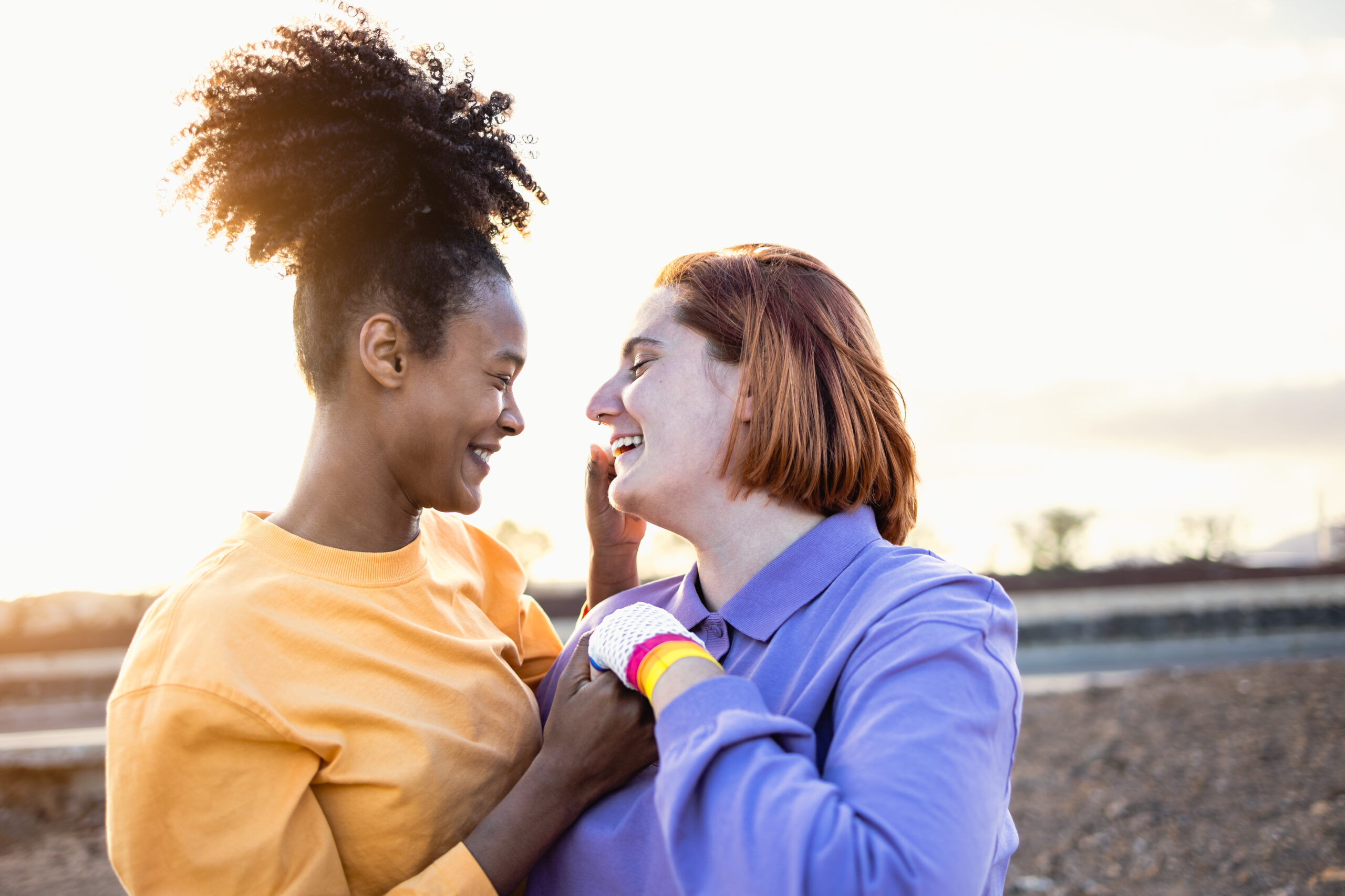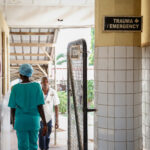- Lesbian teenagers have a lower chance of getting a sexually transmitted infection (STI), but the threat remains. Conditions such as gonorrhoea and chlamydia do happen in this group.
- Having one STI can up your chances of getting another or developing diseases that can damage other parts of a woman’s reproductive system.
- Even though South Africa’s sex education curriculum includes all the right lessons to help pupils of all sexual identities have safe sex in theory, the information that filters through to them is still up to individual teachers.
The morning after Nontsikelelo Gumede, 18, had sex for the first time, she woke up feeling puzzled.
It was with her first boyfriend in the small North West town where she lives.
She had no feelings for the boy in her bed, and had experienced almost no pleasure the night before.
For Gumede sexual relationships only became something she enjoyed when she started to date girls.
“Sex with women is just easier, and there’s no risk of pregnancy,” she says with a grin as she crosses her arms over her white school shirt.
She’s right. But that doesn’t mean having sex with people with vaginas is without hazards.
In fact, research shows that sexually transmitted infections (STIs) such as chlamydia and gonorrhoea (both infections that can cause pain when urinating and a vaginal discharge) do occur among this group, although more rarely than in women who have sex with men.
Bacterial vaginosis (a condition in which bad bacteria outnumber the good, naturally occurring microbes in a woman’s vagina) is fairly common and cases of human papillomavirus (HPV) infection in lesbian women have also been reported. Some strains of HPV can cause cancer in various parts of the body, including the vagina, cervix and anus.
Plus, having one STI, such as bacterial vaginosis, can up your chances of getting another or developing pelvic inflammatory disease, which can damage other parts of a woman’s reproductive system.
Gumede bites her lip and rubs her face. She’s struggling to explain how lesbians can have safe sex.
“I don’t know anything about [that]. The only thing I know is that we can use sex toys.”
Let’s (not) talk about sex
Gumede’s one of five lesbian learners at her school.
She’s lucky that her community is mostly accepting of queer people. Queer people are all those who aren’t straight.
Gumede’s parents and teachers know about her sexuality, and the school’s principal allows students like her to wear trousers instead of a skirt if that’s what they prefer.
But there’s one crucial person at school who doesn’t welcome any talk of sexuality that falls outside the traditional boy-girl mould: the life orientation (LO) teacher.
And this means that during sex education lessons, Gumede and her classmates learn little more than how to avoid getting pregnant — which is not useful to learners in same-sex relationships.
Instead, knowing that barrier devices such as condoms and dental dams (a latex sheet that covers the vagina) can keep them safe when they have sex, or how to use sex toys responsibly has much more real-life value.
When teachers boil sex education down to be only about the possibility of an unwanted pregnancy, important details about a safe and satisfying sex life gets lost, says Casey Blake, a counsellor and sexuality educator at a private practice, called What Now Counselling, east of Johannesburg.
Meaningful and easy-to-understand information about having different types of sex safely isn’t just about protecting queer kids, she says. It protects everyone, because teenagers experiment with sex and their sexuality.
For example, a 2019 study among a group of high school students in the United States showed that almost two-thirds of girls who described themselves as heterosexual have had same-sex experiences too. And teens tend to take risks when it comes to sex (such as having more than one partner), which could mean that safety is not necessarily the first thing they think about. These behaviours should be reflected in the education they get at school, says Blake.
“We don’t talk about [how teens are having sex] because we pretend those kinds of acts [oral and anal sex] don’t exist. Or that somehow heterosexual people don’t need to stay safe during those acts.”
Uncomfortable conversations
Gumede’s LO class should have taught her how to have safe sex with another woman – but it didn’t.
In theory, South Africa’s sex education curriculum includes all the information learners — whatever their sexual orientation or identity — need to help them make safe choices about their sex life. It follows the comprehensive sexuality education (CSE) approach, which teaches kids about the emotional, physical and social aspects of sexuality.
Contrary to the public outcry of conservative groups, this way of teaching sex ed doesn’t encourage kids to have sex. In fact, evidence shows that CSE can help them to wait longer before they start having sex and make safe choices when they do, like using condoms — which is why this type of sex education is included in South Africa’s National Strategic Plan on HIV, TB and STIs.
But in reality, teachers’ views are getting in the way.
Even though CSE is written into South Africa’s national curriculum, teachers often change the content to what they’re comfortable with teaching — and they’re allowed to do so because school governing bodies, principals and other school managers have the power to decide how to adapt lessons.
Plans to curb the decision-making force of such bodies are in the making. But for now the type of learning that happens in the classroom is ultimately up to the school.
In a study published in the Journal of Homosexuality in 2014, researchers asked 25 LO teachers from a mix of urban and rural high schools in the Free State about their perspectives on teaching sexuality education. Some teachers viewed homosexuality as a sin, which influenced how they handled lessons on same-sex relationships.
[WATCH] Inner condoms can increase your sexual pleasure — and protect you
Others said they felt “intimidated” to answer learners’ questions about gay, lesbian or bisexual issues because they didn’t feel comfortable or informed enough about the topic.
Moreover, an in-depth analysis about the real-life usefulness of sexuality education in South African schools showed that teachers’ backgrounds, beliefs or past experiences shape what messages they convey about sex, how they pitch their teaching or whether they simply choose to exclude certain aspects — such as queer sex — because it’s not something the educator believes really exists.
One such teacher told researchers: “The way I was raised as an individual, I only knew of the man and the woman. Nothing in between.”
When teachers shy away from sex ed that includes everyone, they tend to favour an abstinence approach, rather than giving learners comprehensive information, says Ronel Koch, a sexuality education researcher at the University of the Western Cape.
“It’s sometimes because of their religion; others are scared of parents or community members. They might know what they have to do, but because of the resistance, they’d rather just leave it out.”
In a 2019 study, a teacher recalled an encounter where two students asked him about oral sex after a lesson.
He didn’t give them an answer. “I was quite careful because I don’t know if the parents would want [be comfortable with] them to know that yet.”
Getting teachers on board
In 2018, the department of basic education started to roll out scripted lesson plans (after first being trialled) to guide teachers in dealing with topics they might be uneasy with.
For example, a Grade 10 lesson on understanding power and gender roles gives step-by-step teaching points, tips for dealing with learners’ questions and discussion prompts to present the lesson without bringing their own beliefs into the lesson.
The teaching guides even include the unspoken rules of teaching young people who might be questioning their identity: “Whatever is shared must not be repeated outside the classroom. No one should be forced to disclose their sexual orientation or their questioning of their gender identity in public.”
The lesson plans go hand in hand with a five-day training course to help teachers separate their personal values from their professional values, says Ismail Teladia, who is a senior LO curriculum planner with the Western Cape education department.
He says the training programme has been “successfully implemented” across all four urban districts in the metro. In May, they extended the teacher training to the rural parts of the province too. Teachers attending the workshops say they felt more equipped to conduct lessons on sex and found speaking to their peers about dealing with sticky topics valuable.
“When we do teacher training these days, it’s a lot easier to get them on board,” says Teladia.
In the North West, teachers from 56 schools attended these training sessions, the provincial department’s records show. The department picked ten schools from each district to attend the programme.
At Gumede’s high school in the North West, for instance, one teacher mentioned that she was grateful for having been able to attend the course, because “it was a refresher” that helped to prepare her for talking to learners about sex in a way that they would respond to.
“I benefited a lot, and I said so to my colleagues,” she explains.
But the training only works if teachers actually show up — Gumede’s LO teacher didn’t.
The training is often voluntary, so LO teachers can refuse to attend the sessions. As a result, Gumede now has to figure out the answers to her questions about sex herself.
Still, she’s undeterred: “Girls can date girls, even here in this small town.”
“No one should be ashamed of their sexuality.”
Additional reporting by Aisha Abdool Karim, Yolanda Mdzeke and Joan van Dyk










